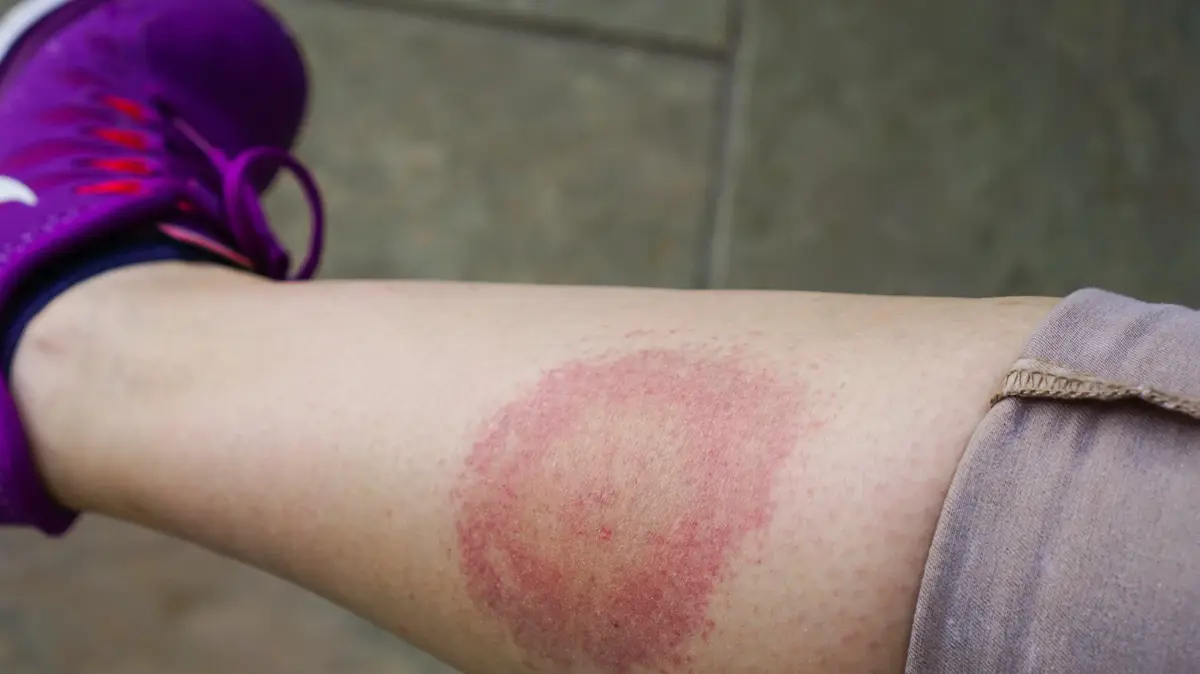Worrying: 1 in 7 people in the world has already contracted this disease.
What about you?
It is called the "Great Imitator" - because its symptoms usually "mimic" other health conditions, but it turns out that Lyme disease should not mimic anyone because it has already infected 14 percent of the world and the rate is only rising.
How dangerous is it and does it have any treatments?
Walla!
health
19/06/2022
Sunday, 19 June 2022, 09:41 Updated: 09:43
Share on Facebook
Share on WhatsApp
Share on Twitter
Share on Email
Share on general
Comments
Comments
Headaches, chills, fatigue, muscle aches and more.
Rash typical of Lyme disease (Photo: ShutterStock)
If you thought snakes, corona or monkey pox were the health issues that should be bothering you right now - we have a particularly worrying flash.
An analysis of blood samples from 150,000 people found that more than 14 percent of people worldwide have contracted tick-borne Lyme disease.
Lyme disease is an infectious disease that is transmitted through parasitic bites (usually ticks) and is caused by the bacterium Borrelia burgdorferi.
The parasites are usually found in hidden places like the scalp, armpits and groin.
After infection, the bacterium is also found in the patient's body fluids, but there is no evidence that Lyme disease can spread to another person through sneezing, coughing or kissing.
More on Walla!
10 Beats, 2022 Version: The biggest threats to our health
To the full article
People with Lyme disease may develop different symptoms and different levels of severity.
Symptoms include headaches, chills, fatigue, muscle aches and swollen lymph nodes.
In severe cases, facial paralysis may also develop.
In most cases of Lyme disease antibiotics can be treated, but without intervention, the pathogen can cause long-term damage and inflammation throughout the body.
Lyme disease was first documented in the 1970s in the Connecticut town of Lyme, hence its name.
It is the most common parasitic disease in Europe and the United States, but is much less common in Israel.
In order to devise a strategy for the prevention of the disease, it is important to understand its prevalence.
To that end, Yan Dong at Kunming University of Medicine in China and colleagues scanned databases for previous studies.
They reduced their search to 89 studies conducted between January 1984 and December 2021. These included blood samples from more than 150,000 people.
The researchers then specifically tested for the presence of antibodies against B. burgdorferi in the blood, indicating a current or previous infection with Lyme disease.
Their results revealed that the global rate of Lyme disease infection is 14.5 percent.
The warming weather allows ticks to reach long distances.
Tick (Photo: ShutterStock)
The analysis indicated three regions with the highest rate of Lyme disease: Central Europe (20.7 percent), Eastern Asia (15.9 percent) and Western Europe (13.5 percent).
The lowest rates were in the Caribbean, South Asia and Oceania (all below 5 percent), while in North America the infection rate was just over 9 percent.
Those at highest risk for infection were men aged 50 and over living in rural areas in the northern hemisphere and having occupations that included staying outdoors or close contact with animals.
The review also showed that Lyme disease infections became more common over time.
A warming climate allows ticks to spread to new areas and also prolongs their life expectancy and increases the chance for them to transmit pathogens.
"Our results suggest that the prevalence of [B. burgdorferi] in 2010-2021 was higher than in 2001-2010," the authors write.
They point out that longer summers, warmer winters and changes in precipitation can play a role in the spread of ticks.
health
My health
Tags
Ticks
Lyme disease
Diseases

